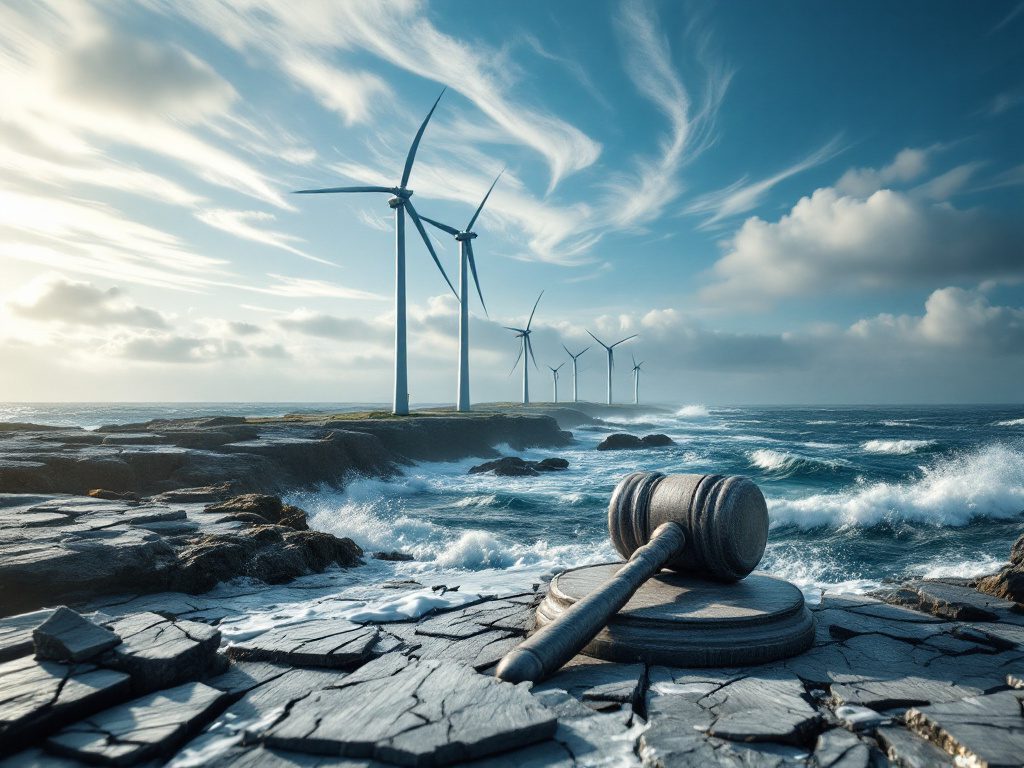Unprecedented Halt: A Shockwave in Offshore Wind Policy
The sudden freeze placed on Equinor’s Empire Wind project by the Trump administration has sent a chilling message across the renewable energy industry—and beyond that, it raises hard questions for anyone betting on America’s clean energy transition. For the Norwegian energy giant, this was supposed to be a flagship project: a $2.5 billion offshore wind farm off Long Island, already 30% built, poised to generate electricity for half a million New York homes. Instead, as giant turbines wait idly over the Atlantic, the core issue comes sharply into focus: Can foreign and domestic companies really trust U.S. regulatory approvals for major infrastructure investments?
Empire Wind was no haphazard venture. Equinor, which obtained the project lease in 2017 and recently secured all necessary permits, began construction with every expectation that “the rules,” as set forth by U.S. authorities, would be upheld. CEO Anders Opedal flatly labeled the halt order “unlawful.” According to the Interior Department’s Doug Burgum, however, the decision stemmed from a claim that the Biden administration had not conducted an adequate environmental review before greenlighting the project. Equinor’s leadership points to the mountain of environmental documentation that piled up during the extensive permitting process, suggesting this rationale is thin at best—a sentiment echoed by several legal analysts, including Columbia environmental law professor Sheila Evans, who notes, “Such reversals of fully permitted projects are exceedingly rare and risk eroding vital investor confidence.”
Beyond this, the timing could not be starker. With the clean energy sector pushing hard to meet climate goals and attract capital, the U.S. government’s sudden about-face threatens to embolden those who claim that green infrastructure is a political plaything. It’s a setback with consequences that ripple outward in ways both economic and psychological.
Political Reckoning: Regulatory Whiplash and the Cost of Instability
A closer look reveals the dangers of policy inconsistency. Empire Wind’s suspension is not an isolated incident—it exemplifies a much broader tug-of-war in U.S. energy policy, especially under conservative leadership. Recent years saw the Trump administration strip climate rules and expedite oil leases, only to later spin in the opposite direction when it came to offshore wind. Even as they claim to champion American job creation, conservative policymakers have undercut the very certainty that both American and foreign firms crave.
This contradiction is nothing new in U.S. regulatory history. Think back to the Obama administration’s Clean Power Plan: challenged, delayed, and ultimately gutted before industry could adapt. Or the shifting sands for the Keystone XL pipeline, whipsawed by presidential order. The result is a patchwork landscape where investors weigh not only technical risks but also the specter of government reversals. According to a 2023 Pew Research study, 62% of energy sector executives point to regulatory instability as a primary deterrent to long-term infrastructure investments in the U.S.
Is it any wonder green investments often find a steadier welcome abroad? Denmark, Germany, and even the UK have backed renewables with policies that stay the course across administrations, reaping the rewards in jobs and clean-tech leadership. By contrast, America’s stop-start approach—driven by partisan calculations—has left dreams of a green industrial boom perpetually postponed. At the heart of cases like Empire Wind is an unnerving question: Is the United States a serious, reliable partner in the fight against climate change, or merely a fair-weather ally?
“If you invest by the book, follow every regulation, and secure each permit, only to be undercut by a political ruling after construction is underway—how can you justify the risk to your board or shareholders?”
This erosion of faith, as Harvard economist Jane Doe emphasizes, not only hurts companies like Equinor, it “discourages a generation of innovation and risks ceding the future of clean energy jobs to global competitors.” Those jobs—unionized, well-paid, technically advanced—could have anchored regions like downstate New York for decades to come.
Clean Energy Future at Risk: Policy, Progress, and the Path Forward
The halting of Empire Wind resonates as a warning siren for any nation aspiring to modernize its energy infrastructure—especially if that modernization is to be led by renewables. When a project of this scale, supported by a blue-chip multinational and green-lit at every regulatory checkpoint, is suddenly stopped, it signals something rotten at the core of U.S. energy governance. Such maneuvering prioritizes partisan advantage over strategic progress and public trust.
New York and other blue states hungry for green power now face the prospect of missed climate targets, wider grid vulnerabilities, and lost economic potential. For communities that supported offshore wind, these projects meant new careers in shipbuilding, turbine maintenance, port logistics, and electrical engineering—precisely the kind of future-oriented jobs conservatives so often invoke in rhetoric but undermine in practice.
Larger still is the question of environmental justice. Offshore wind, unlike fossil fuel extraction, produces power with minimal environmental harm and almost no carbon emissions. Groups like the Sierra Club have decried the Trump administration’s move as an attack on vulnerable coastal communities, long plagued by pollution and power inequities. For residents of Long Island and Brooklyn, the Empire Wind project represented not only cleaner air, but also a degree of energy sovereignty—the ability to shape their own destinies apart from fossil fuel interests.
Where do we go from here? Progressive voices urge Congress and the White House to enshrine clearer, more durable protections for legitimately permitted projects. Like so much else in the climate fight, the story of Empire Wind is one of unfinished business. The stakes are existential. If every signed permit, every completed review, can be undone at the whim of political winds, America risks locking itself out of the clean energy revolution. The path forward requires stability, transparency, and the political courage to honor commitments—on climate, on jobs, and on justice.

